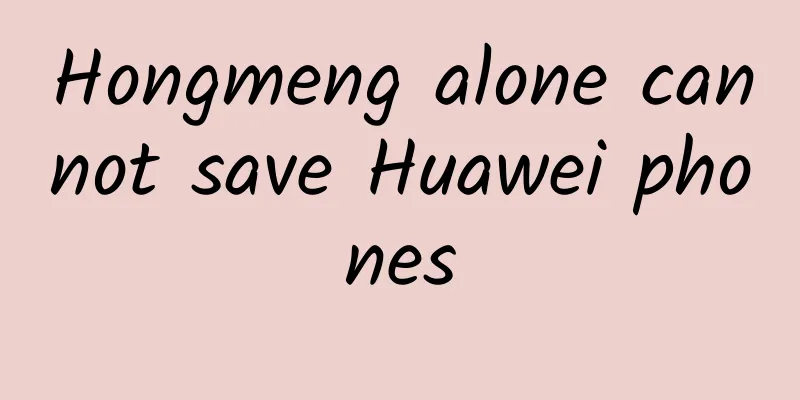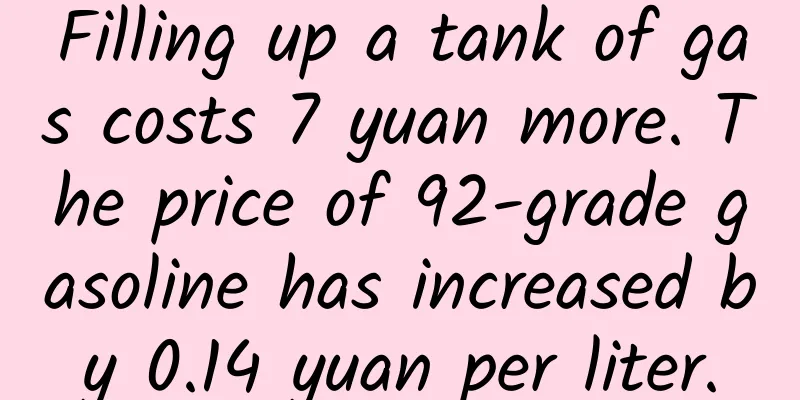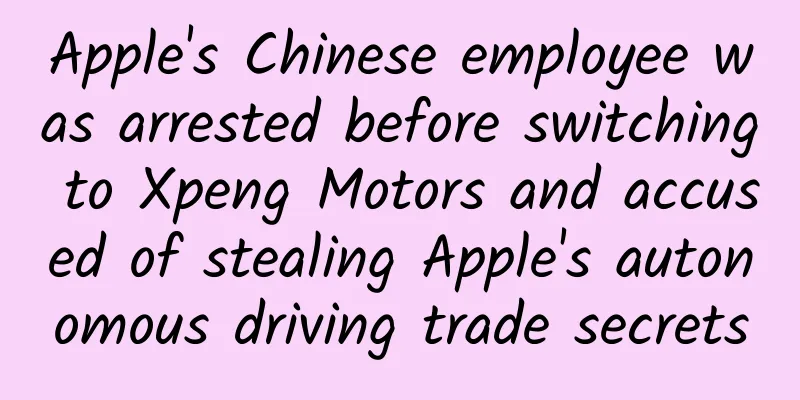Hongmeng alone cannot save Huawei phones

|
In May 2019, facing overseas bans, Huawei solemnly announced that its self-developed operating system "Hongmeng" was on the way. However, three months later, at the launch of Hongmeng 1.0, there were no documents, no APIs, no code examples... The source code that was supposed to be for developers turned into a bunch of PPTs for media reporters. After more than a year of doubts, Hongmeng 2.0 finally unveiled its true colors at the Huawei Developer Conference in September this year. Not only did it bring the code, but it also demonstrated its application on home appliances such as Joyoung and Midea. Huawei even plans to install Hongmeng system on 100 million Huawei devices and 100 million third-party devices in the future. This plan is very beautiful. Once the data is calculated, it will soon be able to share the mobile phone market with iOS and Android. But the reality is a bit cold. From a short-term perspective, Huawei's chip supply has been cut off, and rotating chairman Guo Ping has just stated that they are "still looking for solutions" in terms of mobile phone chips. It is almost hopeless for Hongmeng to save the day alone. From a long-term perspective, due to the immature technology and lack of software and hardware ecosystems, Hongmeng has little chance of catching up with Android on the mobile phone side. In a word, Hongmeng cannot save Huawei phones. So, who will use Hongmeng, which has been officially announced for almost two years? 01. Can Hongmeng save Huawei phones? Hongmeng 2.0 has been officially released. What people are most concerned about is: Can Hongmeng save Huawei phones? The answer is very clear. Hongmeng alone cannot save the situation. The background of Hongmeng 1.0 official announcement was that Huawei had just been included in the US Entity List, Google announced the suspension of some business dealings with Huawei, and GMS was cut off from Huawei. At this time, Huawei still had chips available. Although the loss of GMS affected sales in overseas markets to a certain extent, it had maintained growth in the domestic market for a year. Huawei's response strategy at the time was also very simple: Huawei shipped 240 million mobile phones in 2019 and 105 million units in the first half of 2020. At that time, relying on the order of magnitude of Huawei's mobile phones, it was not impossible for Hongmeng to imitate iOS and build its own ecosystem. However, on the eve of the official announcement of 2.0, the US sanctions were further escalated. Not only TSMC and SMIC cannot produce Kirin chips for Huawei, but even Qualcomm and MediaTek cannot sell chips to Huawei. The Mate 40 may become the last Huawei flagship phone equipped with Kirin chips. The Daily Economic News even directly broke the news that the chip inventory of Huawei's HiSilicon can only be used until the beginning of 2021, and the shipment volume of mobile phones next year has been greatly adjusted to 50 million to 70 million units. What does this shipment volume mean? It is roughly the same as Huawei's smartphone shipments in 2013 and 2014. Basically, it has returned to ten years ago. Therefore, Huawei's mobile phone is stuck in the chip, not the system ; and if the ban continues to be implemented, Huawei's high-end mobile phone production will continue to decrease. Hongmeng system cannot save Huawei's mobile phone. So, can Huawei's mobile phone business help Hongmeng? For example, relying on the existing market. Unfortunately, it is basically impossible. What the operating system needs is an "incremental, traffic" market. An operating system cannot exist in isolation, and requires more developers to participate in its construction. Developers will only be motivated to participate if they see enough incremental market. What's more, general system and software upgrades are synchronized with the improvement of hardware performance: in the PC era, each generation of Intel and Windows squeezes out every last drop of computer performance; in the mobile phone era, each generation of Apple and iOS, every time a new Apple phone is released, the old iOS always seems to become stuck inexplicably. If the hardware is outdated, then the software cannot run; if the software is outdated, the hardware performance cannot be brought into play. Huawei's existing mobile phones with outdated performance naturally cannot cultivate a Hongmeng ecosystem that keeps pace with the times. Then, another question is, since Huawei can't lead the way on its own, what about the three OVM friendly companies? Will they come to the rescue? This involves another issue: an open system ecosystem requires a system leader who does not have to personally take part in the system. 02. What should the mobile phone system do? There are two types of system ecosystem construction: one is Apple's vertical model, where one company does everything, and the other is open to third parties to work together, such as Google's Android. The vertical model requires not only a strong grasp of both hardware and software, but also the trust of users in the product itself. This is why Apple iOS succeeded while Samsung Tizen failed. The third-party model requires a leader who can win the hearts and minds of the people. Not only can the leader not compete with the ecosystem companies by making hardware, but he must also ensure that they can all make profits so that the ecosystem can grow. This can be seen from the failure of Windows Phone in the past. When Windows Phone was first launched, Microsoft was blatantly taking sides. Although Samsung, LG, HTC, Huawei, ZTE, Alcatel, and Fujitsu also supported WP, WP not only announced its alliance with Nokia, but also signed a love letter-like cooperation agreement, stipulating that Microsoft and Nokia would jointly develop product development routes, and even the maps in the system would be developed by Nokia. This kind of flirting naturally annoyed other manufacturers involved in WP. At that time, Joe Kelly, director of Huawei's international media affairs, said in an interview with the Seattle Times that "no manufacturer has made any money from WP devices." The implication was that they had worked hard before but didn't make any money, and now they are being ignored, so they quit. What was even more disastrous was that just as WP was beginning to show success, Microsoft acquired Nokia in early 2014 and loudly promoted its high-quality and low-priced Widows Phone on Amazon. The result of overdoing it was that Samsung, Huawei, and HTC, which were already dissatisfied at the time, were turned from partners into competitors. Third-party manufacturers withdrew from the WP ecosystem one after another: Huawei's last WP phone was released in mid-2013, Samsung ended its last WP model in early 2014, and even HTC, which had the best relationship with Microsoft, withdrew after hastily releasing a phone in April 2014. When Microsoft released the mobile version of Windows 10 in 2015, a new system that Microsoft regarded as a savior, the entire WP ecosystem was empty except Microsoft itself. Unlike Microsoft, which wants to achieve the effect of both hardware and software through the operating system, Google's original intention of making mobile phones was just to serve as a "proofing" - to serve the Android system. That is why, even though Google acquired Motorola, another major feature phone company, as early as 2011, it only symbolically launched an Xphone and stopped there. As for Google's self-developed mobile phones, Google shipped all its early Nexus series in a cooperative manner, which served as a sample for hardware companies in the ecosystem. The subsequent Pixel series, although developed by Google itself, is still essentially a native Android prototype. It is mainly used as a development and testing platform, and the core users are still not on the C-end. Google's attitude is that I am just doing it for fun, don't take it seriously. For this reason, in 2019, the Pixel series only sold 7.2 million units despite a 52% increase in sales, and no one cares at all. These measures have boosted the confidence and enthusiasm of the Android ecosystem, and together have contributed to Android's 60-70% market share. During the construction of WP and Android systems, we can draw a clear conclusion: if you want to develop a mobile phone system, don't compete with mobile phone manufacturers for the meat. After all, a player who is both a referee and an athlete is not welcomed by other opponents. If Huawei wants to use Hongmeng on mobile phones, it will be in this embarrassing situation. Huawei and OVM are direct competitors. In the past few years, "what I increase is what you reduce; what I grab is what you lose." In a commercial society, there are naturally commercial rules to drive it. 03. Is the Internet of Things a good idea? Since Hongmeng's competitor is not Android, who is Hongmeng designed for? The answer is the Internet of Things. According to GSMA data, the number of IoT devices worldwide has grown at a compound annual growth rate of 22% from 2010 to 2019. The number of connected devices reached 12 billion in 2019, and will reach 24.6 billion by 2025. The characteristics of the Internet of Things are that its functions are relatively simple, the scenarios are relatively specific, and the types are particularly numerous. Therefore, the Internet of Things does not require a system with extremely powerful core functions. Instead, it needs a system that can easily cross scenarios and connect various fragmented scenarios. The new blue ocean brought about by this shift in demand has undoubtedly given Huawei the opportunity to overtake others. Hongmeng has the opportunity to become a distributed operating system based on the Internet of Things era. In fact, it is not the first time for Huawei to develop an IoT operating system. As early as 2015, at the Huawei Network Conference, Huawei launched an IoT operating system called LiteOS. It has been applied in many fields such as wristbands, door locks, and cameras. From the perspective of technical architecture, LiteOS is the predecessor of Hongmeng OS. The core code released by Hongmeng as open source is also mainly composed of LiteOS. In addition, we can also get a glimpse of the corresponding technical indicators of Hongmeng: this year it will target traditional IoT terminals such as smart screens, watches, and car machines, and before October next year it will target terminals with memory below 4GB. And with 4G memory, it is obviously far from the current mobile phones with 256G memory. In other words, at least for next year, Hongmeng will still be a typical IoT operating system. But the reality is that after HarmonyOS 2.0 was officially unveiled, Huawei mobile phones were not the first to be equipped with it. Instead, home appliances such as Midea and Joyoung took the lead in launching HarmonyOS. What's more, in the field of AIoT, there is no bottleneck problem like Huawei mobile phones. According to the data released at the Huawei Developer Conference, Huawei still has a lot of capital to build an ecosystem in the field of AloT, and there are many small brothers: 1) We have built the HiLink smart hardware ecosystem with 800 partners, created more than 3,000 products, have more than 50 million smart hardware users, and have shipped more than 220 million units in total; 2) Huawei's Smart Life APP, which is used in conjunction with smart hardware, has 400 million installations, 50 million activated users, and 1.08 billion requests per day for the Smart Life APP; 3) Huawei HiCar has cooperated with more than 150 car models and plans to pre-install more than 5 million units in 2021. Coupled with Huawei's own layout in multiple fields such as smart watches, smart screens, VR, body fat scales, etc., Hongmeng is far ahead of its competitors at the starting point in the field of Internet of Things. Of course, the premise of all this is that Huawei cannot personally make soymilk machines, air conditioners, and range hoods, and should not compete with its own customers for business. 04. If you don’t leave the court, you will have a chance For Huawei, the best answer to developing Hongmeng may not be to pursue a quick victory in the short term, but to stay at the table and wait for opportunities. In the field of mobile phones, Hongmeng is declining. But in the field of Internet of Things, the technical difficulty is not great. Although the industry still needs time to explode, it is still a trend worth occupying. If we review the history of business turnarounds, we will find that many successful companies did not fight hard on the leader's turf, but first quietly accumulated technology, preserved the spark, and survived the cold winter; when a new technological route emerged, they united with the masses and together overthrew the vested interests of the old technological route. This is how ASML's wet etching method defeated Japan's dry etching method, and this is also the case with Google's Android defeating Nokia's Symbian. Who is Hongmeng for? This is not a quick answer question. |
<<: Google Maps updates with COVID-19 disease information layer
>>: Oracle: New TikTok board will have 4 Americans, possibly including Masayoshi Son
Recommend
Double 12 excellent brand promotion cases are here
For operations partners, the activities at the en...
What! Snow Rhon Rhon has grown in the ground? And it tastes sour! ?
During the Lantern Festival, everything is bright...
How can the education industry do short video live streaming well?
According to iResearch Consulting statistics: In ...
Introduction to non-standard advertisements in OPPO App Store
FAQ-Non-standard Advertising Q1: Can I cancel the...
Build a secure app! iOS security series: HTTPS advanced
[[149556]] This article is divided into the follo...
New ideas for old problems: Mobile development strategies - which is better, native or hybrid?
【51CTO.com Quick Translation】 Which solution is b...
Golden Apple Snail: Double "Killer" of Rice Fields and Health
Recently, many netizens posted on social media th...
As the best-selling Chinese brand executive sedan, does BYD Han have the strength to challenge Audi A6L?
Comparing BYD Han with Audi A6L, many people woul...
User experience design practical notes, creating the ultimate product experience that makes users "addicted"
User experience design practical notes, create the...
How romantic was the ancients’ elegant name for snowflakes?
Editor: Gong Zixin The most popular V this winter...
The man who wrote the second most famous formula in science, and who opened the era of extraterrestrial civilizations, has passed away
On September 2, 2022, American astronomer Frank D...
It was revealed that the GPRS encryption algorithm used in early mobile phones was deliberately weakened
[[406364]] A team of researchers from several Eur...
SEO money-making industry project case: How to use long-tail keywords to earn 100,000 yuan a month?
When it comes to SEO , many people may think it i...
The only martyr among the heroes of "Two Bombs and One Satellite"! Today, we commemorate the 53rd anniversary of Guo Yonghuai's death!
December 5, 1968 Huairen Hall in Zhongnanhai Prem...
Pop Mart goes public, taking stock of the top 5 blind box marketing strategies!
On December 11, 2020, Pop Mart (09992.HK) was lis...









